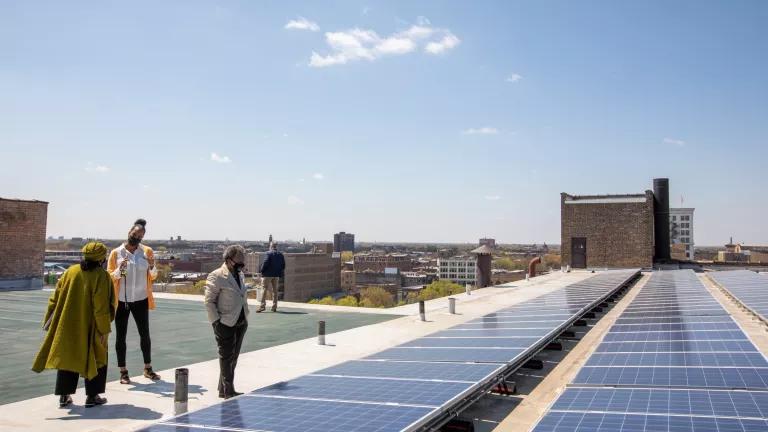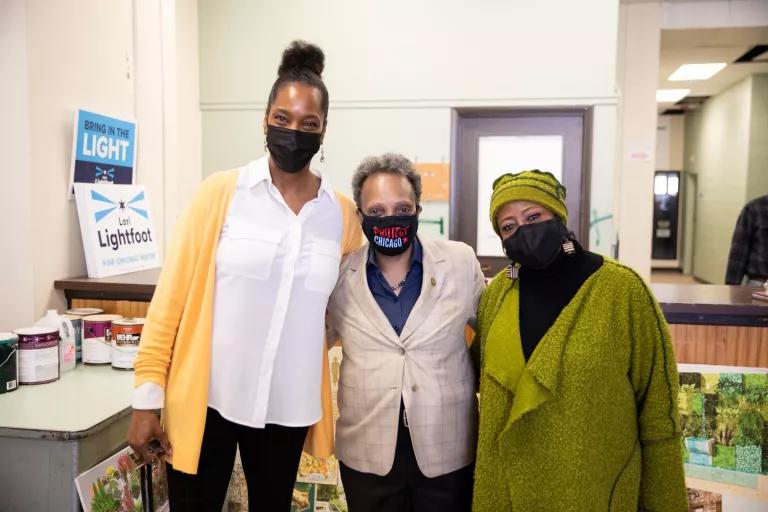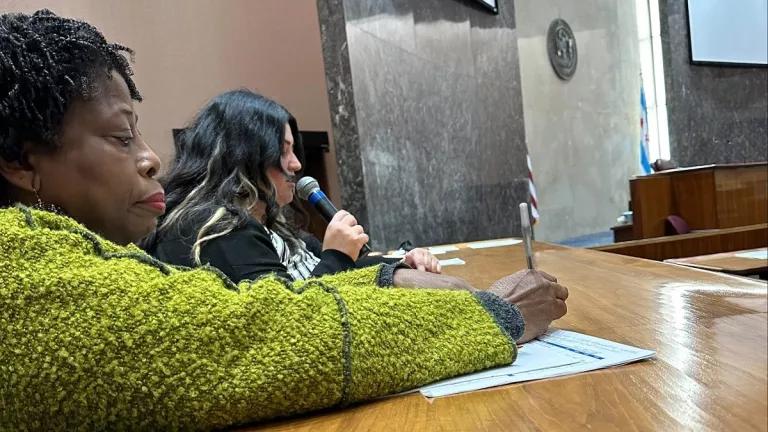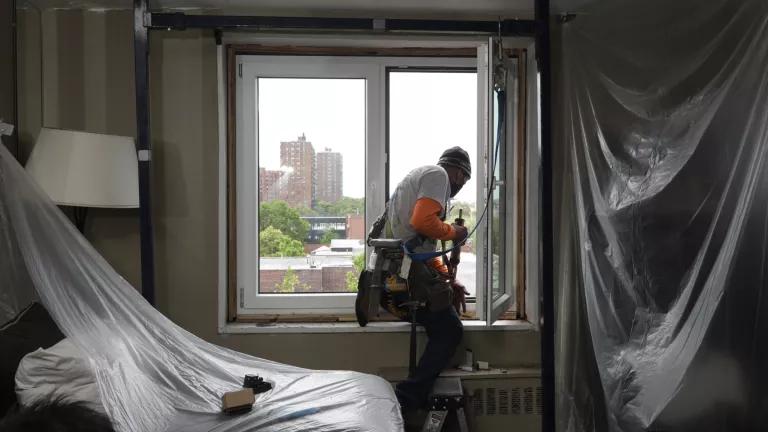Chicago Lays Out New Green Recovery Priorities on COVID-19
Chicago Mayor Lori Lightfoot announced a series of environmental priorities aligned with a “Green Recovery,” a significant step toward reducing the city’s reliance on fossil fuels and creating more equitable economic opportunities in the face of the ongoing COVID-19 pandemic.

Mayor Lightfoot announced Chicago’s Green Recovery Agenda as part of an Earth Day tour at the Institute of Cultural Affairs (ICA).
This blog was co-authored with Mary Nicol, Climate Advisor to the City of Chicago.
Chicago Mayor Lori Lightfoot announced a series of environmental priorities aligned with a “Green Recovery,” a significant step toward reducing the city’s reliance on fossil fuels and creating more equitable economic opportunities in the face of the ongoing COVID-19 pandemic.
Lightfoot laid out the priorities during an Earth Day tour of the Institute of Cultural Affairs (ICA), a model for high efficiency retrofits and onsite renewable energy generation in the city’s Uptown neighborhood. Specifically, the pillars include:
- Comprehensive Climate Strategy: The city’s upcoming Climate Action Plan will chart a course to equitably reduce greenhouse gas emissions, achieve community-level climate adaptation, and chart pathways to a green recovery by providing high quality jobs to residents.
- Building Decarbonization Strategy: Seventy percent of Chicago’s emissions are from the built environment. The Lightfoot administration will develop a building emission reduction strategy that lowers economic burdens on residents and businesses through energy efficiency, electrification, renewable energy and innovation in new construction.
- Better Electricity Franchise Agreement: The next franchise agreement will ensure that in addition to securing safe and reliable electricity delivery, residents will benefit from increased programs that reduce household electricity costs and fight climate change.
- Clean Energy Transition: This year, the City of Chicago will sign a new contract to power municipal buildings with 100% renewable energy by 2025, with at least half of the energy sourced from new renewable sources in the region.
Mayor Lightfoot was joined by Lesley Showers, Chief Operating Officer of the ICA, and Naomi Davis, Founder and CEO of Blacks in Green, at the event. Davis, a local climate and community leader, explained the importance of a community-focused approach to “generating wealth through the green economy, eliminating our reliance on fossil fuels, and taking other actions to build a vibrant and resilient local economy."

Naomi Davis (right), with Mayor Lightfoot (center) and Lesley Showers (left). Davis explained that a community-focused approach is needed in Chicago’s Green Recovery.
Chicago’s Green Recovery Focuses on Jobs and Equity
Chicago’s Green Recovery Agenda aligns with several principles of the Bloomberg Philanthropies American Cities Climate Challenge, including the importance of creating high-road clean energy jobs and pursuing an equitable building decarbonization strategy.
Recent advances in technology, like heat-pump water heaters and induction stoves, mean we have more opportunity than ever to power buildings cleanly and efficiently. And while low-income communities and communities of color stand to reap the greatest benefits from the transition, they are often excluded from the benefits of building decarbonization.
Nationwide, poor air quality has a disproportionately harmful effect on Black, Indigenous and other communities of color. This disparity is even more pronounced in the Midwest, where non-white communities are more likely to be exposed to hazardous particle pollution as a result of fossil fuel combustion. Low-income households also bear the burden of disproportionate energy costs: In Illinois, low-income families spend an average of 13 percent of their income on energy, with Black and Latinx households particularly affected.
As Chicago transitions away from burning gas, propane and oil inside homes and businesses to efficient appliances that run on clean electricity, the city must do so in a way that addresses underlying economic and health injustices facing marginalized communities. New policies must complement on-the-ground efforts to address energy insecurity and close the clean energy affordability gap. Putting equity at the center of building decarbonization policy means tackling, rather than exacerbating, these inequalities.
The Path Forward in Chicago
Transitioning away from using fossil fuels in buildings will take many years, but because buildings and the equipment within them can last for decades, now is the time to make the right policy decisions. Luckily, there are multiple pathways to achieving net zero carbon, including decarbonization in new building construction, incentivizing lower energy consumption, increased building electrification, and investing in non-grid renewable energy. As leaders such as Davis have noted, Chicago’s communities must also play an active part in shaping any path forward.
All four pillars of Chicago’s Green Recovery indicate Mayor Lightfoot’s willingness to build on previous climate actions. Last September, she sent a letter to electric utility ComEd warning that without a substantive plan for reforms—including agreeing to a robust Energy and Equity Agreement—the city would not renew its agreement.
These tough policy stances, paired with a commitment to equitable implementation, represent a clear path not only toward climate justice, but also health, economic, housing, and labor justice. By pursuing these measures in a smart and inclusive way, Chicago’s Green Recovery Agenda can benefit all of its communities, including those that have been historically marginalized.



